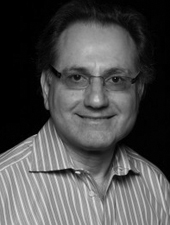Mao, Y. S., Zhang, B., Spector, D. L. (2011) Biogenesis and function of nuclear bodies. Trends in Genetics, 27. pp. 295-306. ISSN 0168-9525
Abstract
Nuclear bodies including nucleoli, Cajal bodies, nuclear speckles, Polycomb bodies, and paraspeckles are membraneless subnuclear organelles. They are present at steady-state and dynamically respond to basic physiological processes as well as to various forms of stress, altered metabolic conditions and alterations in cellular signaling. The formation of a specific nuclear body has been suggested to follow a stochastic or ordered assembly model. In addition, a seeding mechanism has been proposed to assemble, maintain, and regulate particular nuclear bodies. In coordination with noncoding RNAs, chromatin modifiers and other machineries, various nuclear bodies have been shown to sequester and modify proteins, process RNAs and assemble ribonucleoprotein complexes, as well as epigenetically regulate gene expression. Understanding the functional relationships between the 3D organization of the genome and nuclear bodies is essential to fully uncover the regulation of gene expression and its implications for human disease.
| Item Type: | Paper |
|---|---|
| Uncontrolled Keywords: | Cell Nucleus Cell Nucleus Structures Gene Expression Regulation Humans Nuclear Proteins RNA RNA-Binding Proteins Signal Transduction Sumoylation Transcription Factors Transcription, Genetic |
| Subjects: | bioinformatics bioinformatics > genomics and proteomics > genetics & nucleic acid processing bioinformatics > genomics and proteomics > genetics & nucleic acid processing > DNA, RNA structure, function, modification > nuclear speckles |
| CSHL Authors: | |
| Communities: | CSHL labs > Spector lab |
| Depositing User: | Matt Covey |
| Date: | 2011 |
| Date Deposited: | 10 Dec 2012 20:03 |
| Last Modified: | 02 Dec 2016 21:42 |
| PMCID: | PMC3144265 |
| Related URLs: | |
| URI: | https://repository.cshl.edu/id/eprint/26371 |
Actions (login required)
 |
Administrator's edit/view item |


